Address
304 North Cardinal
St. Dorchester Center, MA 02124
Work Hours
Monday to Friday: 7AM - 7PM
Weekend: 10AM - 5PM
Address
304 North Cardinal
St. Dorchester Center, MA 02124
Work Hours
Monday to Friday: 7AM - 7PM
Weekend: 10AM - 5PM

In the ever-evolving landscape of kitchen technology, the commercial air fryer has emerged as a beacon of innovation, reshaping the way we cook and eat. This compact appliance, once a niche player in the culinary world, has now become a staple in restaurants, commercial kitchens, and even home kitchens for its ability to offer healthier, faster, and more delicious cooking options. As we delve into the realm of commercial air fryer development, it’s clear that this small gadget is poised to make a significant impact on both our health and the environment.
From the humble hearth fires of ancient civilizations to the sleek, smart kitchens of today, the evolution of kitchen appliances has been a testament to human ingenuity and a relentless pursuit of convenience. Over the centuries, kitchen technology has transformed the way we cook, save time, and even enjoy our meals. Let’s take a journey through time to explore the fascinating evolution of kitchen appliances.
In the early days, cooking was a labor-intensive process that relied heavily on manual labor and basic tools. Pots and pans were crafted from clay, and stoves were fueled by wood, coal, or animal dung. The cooking process was often slow and inconsistent, with food prone to burning or undercooking.
The advent of the kitchen range in the 19th century marked a significant milestone. These early ranges were fueled by coal and provided a more controlled cooking environment. They allowed for the use of pots and pans that could be placed directly on the heat source, offering a wider range of cooking methods such as boiling, simmering, and frying.
As the 20th century dawned, electric appliances began to emerge, replacing their steam-powered predecessors. The electric oven, introduced in the early 1900s, offered a cleaner and more efficient way to bake and roast. The refrigerator, which came into widespread use in the 1920s, revolutionized food preservation, extending the shelf life of perishable items.
The 1950s and 1960s saw a surge in the production of small kitchen appliances, making cooking more accessible to the average household. The blender, food processor, and electric mixer transformed the way we prepare ingredients, simplifying tasks like chopping, blending, and kneading. The toaster, coffee maker, and microwave followed suit, further reducing the time and effort required for daily cooking tasks.
The late 20th century brought about a wave of innovation with the introduction of smart kitchen appliances. These devices, equipped with advanced technology, could be controlled remotely and programmed to perform tasks at specific times. Smart ovens, dishwashers, and refrigerators became popular, offering users convenience and energy efficiency.
In recent years, the focus has shifted towards sustainability and health. Induction cooktops, for example, have gained popularity due to their energy efficiency and precise temperature control. Air fryers have also surged in popularity, offering a healthier alternative to traditional deep-frying by using hot air to circulate around the food, resulting in crispy outsides and tender insides with less oil.
The evolution of kitchen appliances has not only made cooking easier but has also changed the way we perceive food. Modern appliances have allowed for the exploration of new recipes and cooking techniques, expanding our culinary horizons. They have also brought about a cultural shift, with cooking becoming more of a leisure activity rather than a chore.
In the realm of commercial kitchen appliances, the journey has been equally transformative. Commercial ranges, grills, and fryers have evolved to meet the demands of busy restaurants and commercial kitchens. These appliances are designed for heavy-duty use, with features like durable construction, rapid heat-up times, and efficient energy use.
The evolution of kitchen appliances has been a continuous cycle of innovation and adaptation. As technology advances, we can expect to see even more sophisticated and energy-efficient appliances hitting the market. The future of kitchen appliances may include features like AI-driven cooking assistance, personalized meal preparation, and even appliances that can predict and prevent food waste.
In conclusion, the evolution of kitchen appliances is a story of progress and convenience. From the simplest tools to the most advanced smart devices, these innovations have changed the way we live, eat, and interact with our kitchens. As we continue to embrace new technologies, the future of kitchen appliances promises to be both exciting and transformative.

The journey of kitchen appliances has been a testament to human ingenuity and the relentless pursuit of convenience. From the ancient Egyptians using bricks to bake bread to the modern-day smart appliances that can control themselves, the evolution of kitchen gadgets has been nothing short of remarkable. Amidst this evolution, the commercial air fryer emerged as a revolutionary innovation, changing the way we think about healthy and crispy cooking.
The concept of air frying, in essence, dates back to the early 2000s, when home consumers started to embrace healthier cooking methods. It was during this period that the first air fryer models were introduced to the market. These early models were compact and primarily designed for personal use, emphasizing the potential of air circulation to mimic the crispy texture of fried foods without the deep fat traditionally required.
As word spread about the health benefits of air frying, such as reduced oil content and lower calorie counts, commercial kitchens began to take notice. Chefs and restaurateurs saw the potential to offer customers a new level of health-conscious cuisine that didn’t compromise on taste or texture. The birth of the commercial air fryer was thus a response to this growing demand for a healthier, more efficient cooking method.
Initially, these commercial units were quite different from their home counterparts. They were larger, more robust, and often had more powerful motors to handle the demands of commercial kitchens. They also included features like timers, adjustable temperature settings, and in some cases, even a “preheat” function, which was essential for maintaining consistency across batches of food.
The design of commercial air fryers also had to accommodate the harsher conditions of a professional kitchen. They needed to be durable enough to withstand the rigors of high-volume cooking, easy to clean to prevent food buildup, and often equipped with stainless steel construction to resist corrosion and maintain a hygienic environment.
As the commercial air fryer market expanded, so too did the variety of brands and models available. Manufacturers began to innovate, introducing features that catered to specific types of cooking. For instance, some units were optimized for breaded chicken, while others were designed for vegetables or even seafood. The rise of these specialized models reflected the diverse needs of commercial kitchens, from fast-food chains to gourmet restaurants.
The technology behind the commercial air fryer continued to evolve. Engineers focused on improving the efficiency of the air circulation system, which was crucial for achieving the desired crispiness. They also worked on enhancing the heating elements to ensure even cooking and minimize hotspots. These advancements not only improved the quality of the food but also increased the longevity of the appliances.
With the growing awareness of health and wellness, the commercial air fryer started to gain popularity in a wider range of establishments. Gyms, sports clubs, and even hospitals began to offer air-fried snacks as part of their health-focused menus. This expanded market further spurred innovation, as manufacturers sought to create products that were not only functional but also visually appealing.
In recent years, the commercial air fryer has become an indispensable tool in the kitchen. It has not only helped businesses reduce their operational costs by using less oil but has also opened up new culinary possibilities. Chefs are now experimenting with a wider range of recipes, pushing the boundaries of what can be achieved with air frying.
Today, the commercial air fryer is a cornerstone of modern kitchen appliances. It stands as a symbol of the industry’s ability to adapt to changing consumer demands and technological advancements. From its humble beginnings as a compact home appliance to its current status as a staple in commercial kitchens worldwide, the commercial air fryer has truly come a long way, and its journey is far from over. As new innovations continue to emerge, we can only anticipate what the next chapter will bring to this ever-evolving landscape.
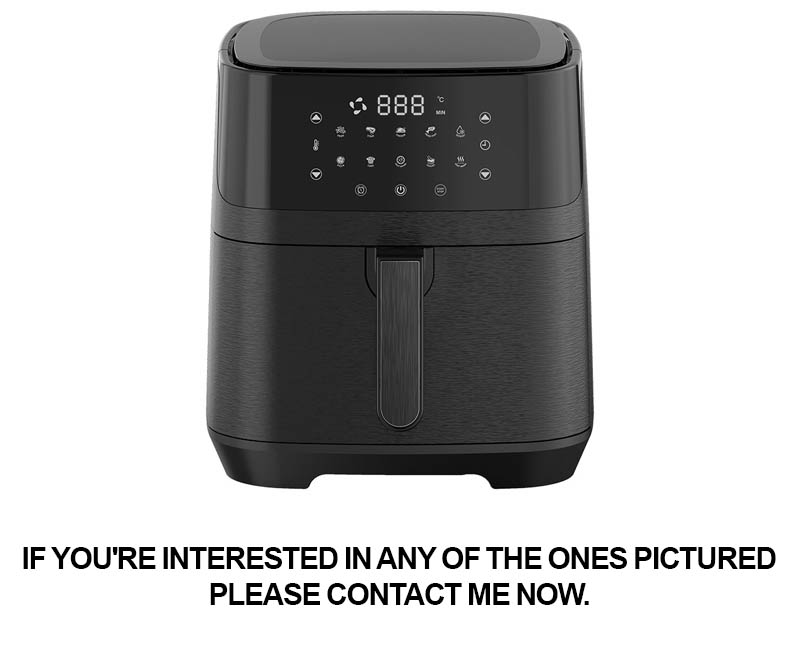
The landscape of commercial kitchen appliances has seen a remarkable transformation, and at the forefront of this evolution are the innovative designs emanating from leading factories around the world. These factories have been instrumental in crafting cutting-edge air fryers that not only enhance culinary experiences but also set new standards in efficiency, safety, and style.
In these state-of-the-art facilities, engineers and designers collaborate to push the boundaries of what an air fryer can be. The result is a series of products that blend functionality with aesthetics, appealing to both chefs and restaurateurs alike. Here’s a closer look at some of the innovative designs that have emerged from these leading factories:
Smart Technology Integration – Modern commercial air fryers are now equipped with smart technology that allows for precise temperature control and programmable settings. Factories have integrated features such as touchscreens and Wi-Fi capabilities, enabling users to monitor and adjust cooking parameters from a distance. This not only streamlines operations but also ensures consistency in the quality of food being produced.
Energy Efficiency – As sustainability becomes a paramount concern, factories have focused on creating air fryers that are energy-efficient. These appliances use less electricity compared to traditional deep fryers, significantly reducing operational costs and carbon footprints. The advanced heat distribution systems in these fryers ensure that energy is used effectively, minimizing waste and saving on utility bills.
Compact and Modular Designs – Space is often a premium in commercial kitchens, especially in bustling restaurants and cafes. Leading factories have responded by producing air fryers that are compact yet powerful. These fryers come in various sizes and can be easily integrated into existing kitchen layouts. Additionally, modular designs allow for easy maintenance and scalability as businesses grow.
Safety Features – Safety is paramount in commercial kitchens, and leading factories have incorporated a range of safety features into their air fryers. Automatic shut-off mechanisms, non-slip bases, and cool-touch exteriors are just a few examples of how these appliances are designed to protect both staff and customers. These features also extend the life of the fryer by preventing overheating and accidents.
Customizable Cooking Modes – To cater to a diverse range of recipes and dietary preferences, leading factories offer air fryers with customizable cooking modes. These may include settings for crispy chicken, roasted vegetables, or even health-conscious options like low-fat cooking. Such versatility allows chefs to explore a wider spectrum of dishes without the need for multiple appliances.
Ergonomic Design – The ease of use is another aspect that leading factories have focused on. Air fryers now come with user-friendly interfaces, easy-to-clean surfaces, and components that are designed for quick assembly and disassembly. Ergonomic handles and controls make it simpler for kitchen staff to operate the fryer efficiently, reducing the risk of accidents and improving productivity.
Custom Branding and Customization – Recognizing the importance of branding and customization in the commercial market, leading factories offer the ability to brand their air fryers with logos and specific design elements. This not only allows businesses to maintain a cohesive aesthetic across their kitchen equipment but also serves as a marketing tool to reinforce brand identity.
Advanced Heat Conduction – The heart of any air fryer lies in its ability to circulate hot air evenly. Leading factories have developed fryers with advanced heat conduction systems that ensure a consistent and even cooking experience. This means that food is cooked to perfection without the need for stirring or flipping, saving time and effort in the kitchen.
Durable Materials – To withstand the rigors of commercial use, air fryers from leading factories are constructed with durable materials. Robust stainless steel exteriors and high-quality interior components ensure that the appliances can handle continuous use without compromising on performance or appearance.
Warranty and Support – Finally, leading factories understand that after-sales service is crucial. They offer comprehensive warranties and support packages to ensure that their customers can rely on their products for years to come. This level of commitment to customer satisfaction sets these factories apart in the competitive commercial air fryer market.
In summary, the innovative designs from leading commercial air fryer factories are a testament to the industry’s commitment to technological advancement and customer satisfaction. These appliances are not just tools for cooking; they are integral to the seamless operation of modern kitchens, offering a blend of efficiency, safety, and culinary excellence.
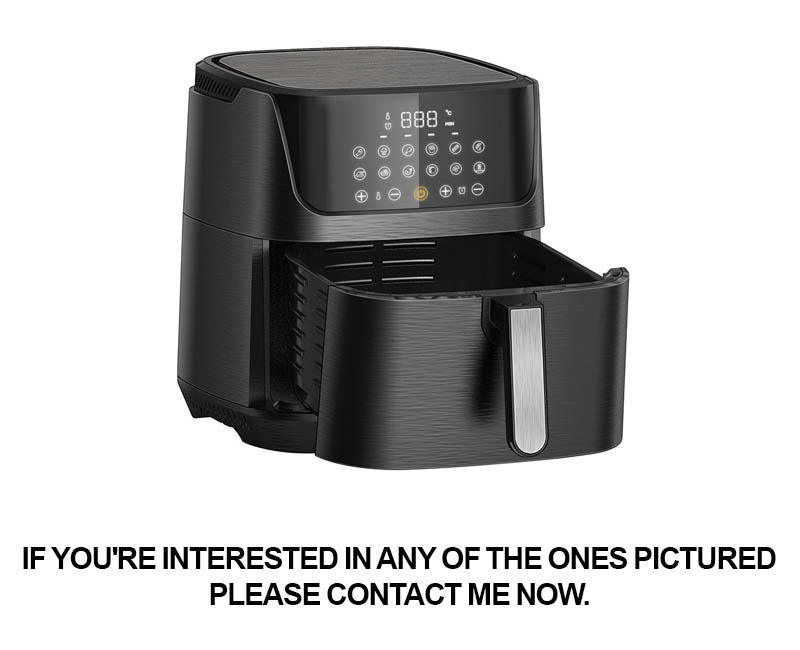
In the ever-evolving landscape of kitchen appliances, the air fryer has emerged as a game-changer. With its ability to cook crispy, delicious food with significantly less oil than traditional frying methods, it’s no wonder this appliance has become a staple in many homes and commercial kitchens alike. Let’s delve into the market insights and trends shaping the air fryer industry.
The surge in popularity of air fryers can be attributed to several key factors. For one, health consciousness is on the rise, with consumers increasingly seeking out healthier alternatives to deep-frying. Air fryers offer a solution that allows for the creation of crispy fried foods with minimal oil, making them a healthier choice for those watching their fat intake.
Moreover, the convenience factor cannot be overlooked. Air fryers are compact, easy to use, and typically require less time to cook than traditional ovens. This convenience has made them a favorite among busy families and individuals looking to save time without sacrificing flavor.
The market for air fryers has seen a significant growth in recent years, with sales figures skyrocketing. According to a report by Grand View Research, the global air fryer market size is expected to reach USD 6.2 billion by 2025, growing at a CAGR of 11.1% from 2019 to 2025. This rapid expansion is driven by the appliance’s versatility, as it can be used to cook a wide range of foods, from snacks to full meals.
Innovation within the industry is also a driving force behind the market’s growth. Manufacturers are constantly pushing the boundaries of what air fryers can do, introducing features like programmable timers, adjustable temperature settings, and even air fryer ovens that combine air frying with traditional cooking methods. These advancements cater to the diverse needs of consumers, offering a more personalized cooking experience.
One notable trend in the air fryer industry is the emphasis on sustainability. As environmental concerns continue to grow, manufacturers are focusing on producing air fryers that are energy-efficient and made from recyclable materials. This shift not only appeals to eco-conscious consumers but also aligns with global initiatives aimed at reducing carbon footprints.
The rise of smart technology has also had a significant impact on the air fryer market. Smart air fryers, which can be controlled via a smartphone app, are becoming increasingly popular. These devices allow users to monitor and control their cooking process remotely, adding a layer of convenience and control that traditional air fryers lack.
Another trend is the customization of air fryers to cater to specific dietary preferences. For instance, there are models designed for gluten-free, vegan, or low-carb diets, making it easier for consumers to find an appliance that suits their needs. This level of customization is a testament to the industry’s responsiveness to consumer demands.
The retail landscape is also evolving in the air fryer industry. Online sales have seen a significant boost, with more consumers turning to e-commerce platforms to purchase their appliances. This shift is attributed to the convenience of shopping from home, as well as the competitive pricing and wide selection available online.
Additionally, there’s a growing trend of cross-promotion and collaboration within the industry. Manufacturers are partnering with chefs, dietitians, and influencers to showcase the versatility and health benefits of air fryers. These partnerships often result in exclusive recipes, cooking demonstrations, and even culinary competitions, further boosting the appeal of the product.
Lastly, the air fryer industry is not without its challenges. One of the main concerns is the perception of air fryers as a “fad” rather than a permanent fixture in the kitchen. To combat this, manufacturers are investing in research and development to ensure that air fryers continue to improve and offer value beyond the initial novelty.
In conclusion, the air fryer industry is experiencing a surge in popularity driven by health and convenience trends, technological advancements, and a focus on sustainability. As the market continues to grow, it will be interesting to see how manufacturers respond to consumer demands and continue to innovate in this dynamic sector.
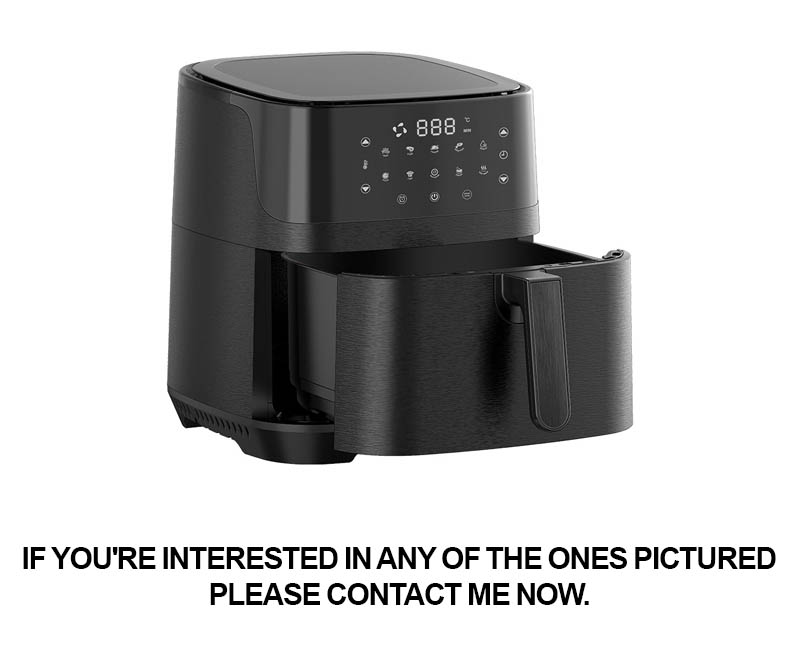
The air fryer’s rise in popularity has not only transformed kitchen appliances but has also had a significant impact on health and sustainability. Here’s a closer look at how these compact wonders are reshaping our culinary habits and the environment.
Air fryers have become a staple in modern kitchens, offering a healthier alternative to traditional deep-frying methods. By using a small amount of oil and hot air to cook food, they reduce the fat content by up to 80%, making them a favorite among health-conscious consumers. This shift towards healthier cooking has been a game-changer for those looking to enjoy fried foods without the guilt.
The health benefits of air fryers are not just limited to fat reduction. They also help retain more nutrients in the food compared to deep-frying, as the lower temperatures and shorter cooking times minimize nutrient loss. This is particularly important for vegetables and lean proteins, which can maintain their nutritional value when cooked with an air fryer.
In terms of sustainability, air fryers are a greener choice. Traditional deep-frying requires large amounts of oil, which can be harmful to the environment if not properly disposed of. The air fryer’s efficient use of oil and energy is a step towards reducing our carbon footprint. Additionally, the appliances themselves are often energy-efficient, consuming less power than conventional ovens and fryers.
As the air fryer industry continues to grow, manufacturers are focusing on creating appliances that are not only health-friendly but also eco-conscious. Many models now come with features like non-stick coatings that are free from harmful chemicals, such as PFOA and PTFE, which are often found in traditional non-stick cookware.
The convenience of air fryers is another factor that has influenced their popularity. They are compact and easy to use, making them perfect for small spaces and busy lifestyles. This convenience extends to the cleaning process as well; the non-stick surfaces and removable parts make it a breeze to clean up after use.
The impact of air fryers on health and sustainability is also seen in the way they encourage home cooking. By providing a quick and easy way to prepare a variety of dishes, air fryers are reducing the reliance on processed foods, which are often high in unhealthy fats and sugars. This shift towards home-prepared meals can lead to better overall dietary habits and a more balanced lifestyle.
Moreover, the versatility of air fryers has expanded beyond the realm of fried foods. They can be used to roast, grill, and even bake, allowing for a wider range of recipes to be enjoyed in a healthier way. This has spurred innovation in the kitchen, with chefs and home cooks alike experimenting with new and exciting recipes that are both delicious and beneficial to health.
The environmental impact of air fryers is further highlighted by their longevity. Many models are built to last, with durable materials and sturdy construction. This means that, over time, they can replace multiple appliances, further reducing waste and the need for frequent replacements.
In the realm of sustainability, the air fryer industry is also addressing the issue of packaging. Some manufacturers are using recycled materials and reducing packaging waste, which is a small but significant step towards a more sustainable future.
As health and environmental concerns continue to rise, the air fryer’s impact on both is undeniable. It’s a compact appliance that has the power to change how we cook, eat, and live. By promoting healthier eating habits and reducing our environmental impact, the air fryer is not just a kitchen gadget; it’s a symbol of a more mindful approach to food and living.
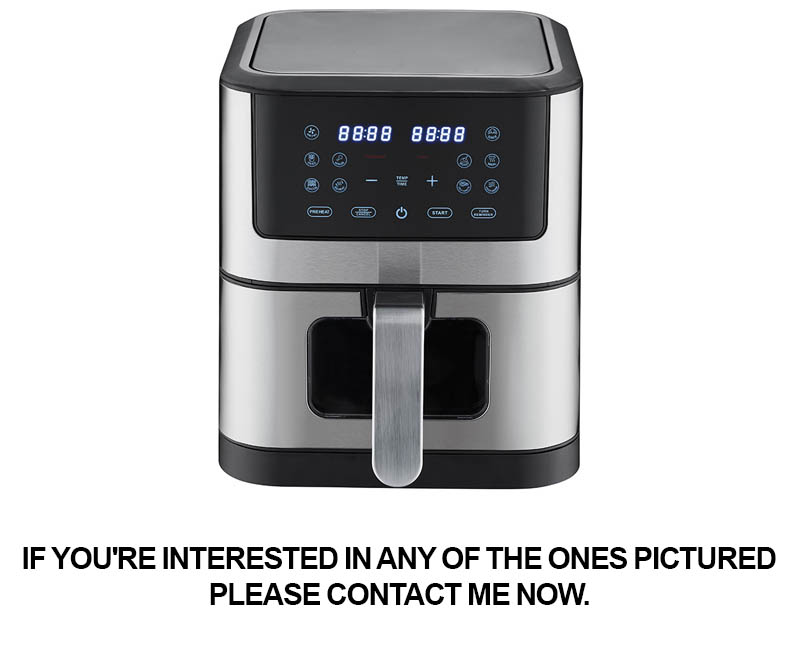
In the bustling landscape of commercial air fryer factories, success stories are as varied as the products they produce. Here’s a glimpse into a few that have made waves in the industry:
GreenGourmet’s Leap to Eco-Friendly TechnologyGreenGourmet Air Fryer Factory has made a name for itself by integrating eco-friendly materials into their air fryer designs. The use of recycled plastics and energy-efficient components has not only garnered them a green certification but also a loyal customer base. Their success lies in the balance they’ve struck between innovation and environmental responsibility.
CookEase’s Market Expansion with Compact ModelsCookEase Air Fryer Factory has seen significant growth by catering to the needs of small kitchen spaces. Their compact air fryers have become a hit with urban dwellers and campers. The factory’s strategic marketing and focus on product versatility have turned what was once a niche product into a staple in many households.
HealthyChef’s Health Conscious InnovationHealthyChef Air Fryer Factory has carved out a niche in the health-conscious market. By offering models with adjustable oil capacities and digital temperature controls, they’ve empowered consumers to enjoy fried foods with a fraction of the fat. Their success is a testament to the growing demand for healthier cooking options.
EcoFry’s Global Reach Through Strategic PartnershipsEcoFry Air Fryer Factory has expanded its market reach by forming strategic partnerships with international distributors. Their commitment to quality and durability has led to a strong reputation abroad. Their success story is one of adaptability and understanding the diverse needs of global consumers.
SizzleSavers’ Customization and PersonalizationSizzleSavers Air Fryer Factory has differentiated itself by offering customizable options for their air fryers. Customers can choose from various colors, sizes, and even add their own brand logos. This personal touch has not only increased sales but also created a loyal community of brand enthusiasts.
FryFree’s Targeted Marketing CampaignsFryFree Air Fryer Factory has seen remarkable success through targeted marketing campaigns that highlight the benefits of air frying over traditional frying methods. Their use of social media influencers and direct-to-consumer marketing has created a buzz around their product, leading to rapid sales growth.
InnovateAir’s Continuous Product ImprovementInnovateAir Air Fryer Factory has thrived by constantly refining their products based on customer feedback. They’ve introduced features like self-cleaning capabilities and programmable cooking modes, making their air fryers not just a cooking appliance but a smart kitchen companion. Their commitment to innovation has kept them ahead of the curve.
SmartFry’s Integration of Smart TechnologySmartFry Air Fryer Factory has taken the leap into the smart kitchen era by integrating their air fryers with Wi-Fi connectivity and mobile apps. Users can control their appliances remotely, receive notifications, and even download new recipes. This integration has opened up a new market segment for the factory, appealing to tech-savvy consumers.
GlobalFry’s Adaptation to Local PreferencesGlobalFry Air Fryer Factory has expanded into various countries by adapting their product lines to match local culinary preferences. From incorporating regional spices to creating models that can handle different voltage systems, their adaptability has helped them establish a strong presence in diverse markets.
AirFusion’s Focus on Customer ServiceAirFusion Air Fryer Factory has built a reputation on exceptional customer service. They offer a range of support services, including lifetime warranties and easy-to-access customer support. This dedication to customer satisfaction has led to high repeat purchase rates and word-of-mouth referrals.
These success stories from commercial air fryer factories illustrate the dynamic nature of the industry, where innovation, market responsiveness, and a focus on quality are key to standing out in a competitive market.
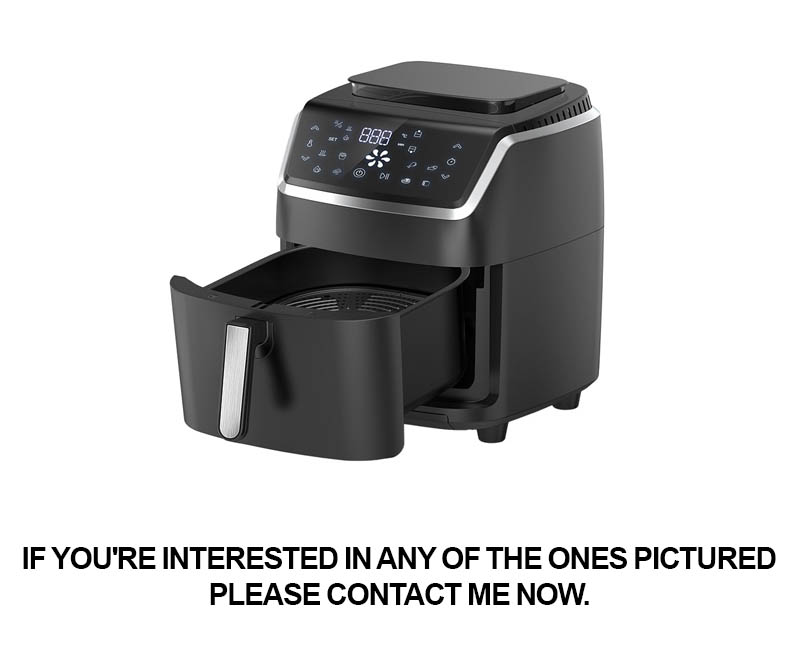
In the realm of commercial kitchen appliances, the air fryer has emerged as a revolutionary technology, transforming the way we cook and consume food. Let’s delve into the sophisticated technology that powers these modern marvels.
The heart of a commercial air fryer lies in its heating element, which is designed to generate intense heat while circulating air around the food. This unique method of cooking, known as hot air frying, differs significantly from traditional deep frying, which involves submerging food in oil.
The heating element in an air fryer is typically a halogen bulb or a ceramic element that can reach temperatures upwards of 400°F (204°C). This high heat is crucial for the air fryer’s ability to cook food quickly and efficiently. However, it’s not just the heat that makes these machines so effective; it’s the way the heat is distributed.
Air fryers use a fan to circulate the hot air around the food, ensuring that every piece is exposed to the heat source. This constant movement of air helps to cook the food evenly, reducing the risk of burning and ensuring that the outside is crispy while the inside remains tender. The fan also plays a vital role in the air fryer’s ability to reduce oil usage, as the hot air helps to create a similar texture to deep-fried food without the need for large amounts of oil.
The design of the air fryer’s cooking basket is another key aspect of its technology. These baskets are often made of non-stick materials, which not only make cleaning easier but also ensure that food doesn’t stick to the surface during cooking. The baskets are typically designed with small holes or a grid pattern to allow the hot air to flow freely around the food, promoting that desirable crispy exterior.
Modern commercial air fryers also incorporate advanced temperature control systems. These systems allow users to set precise temperatures and cooking times, ensuring that the food is cooked to perfection every time. Some models even have pre-programmed settings for various types of food, making them incredibly user-friendly.
One of the most innovative features of commercial air fryers is their ability to adjust the fan speed. This feature allows for more control over the cooking process, as the speed of the fan can be adjusted to accommodate different types of food and cooking requirements. For instance, slower fan speeds can be used for delicate items like fish fillets, while higher speeds are ideal for items that require a more intense cooking environment, such as chicken wings.
Energy efficiency is another critical aspect of the technology behind commercial air fryers. These machines are designed to use less energy than traditional deep fryers, making them a more sustainable option for commercial kitchens. The combination of high heat and air circulation means that food cooks faster, which not only saves time but also reduces energy consumption.
In terms of safety, commercial air fryers are equipped with various features to prevent accidents. Overheating protection is standard, as is a cool-touch exterior that prevents burns. Some models also have automatic shut-off functions to ensure that the machine turns off if it’s left unattended or if the cooking basket is removed.
The technology behind commercial air fryers has also led to advancements in the way we think about food preparation. These machines are not just for frying; they can be used for a wide range of cooking methods, including roasting, baking, and even defrosting. This versatility makes them a valuable addition to any commercial kitchen, from fast-food restaurants to healthcare facilities.
In conclusion, the technology behind commercial air fryers is a marvel of modern engineering. From the heating element and fan system to the temperature control and safety features, these machines are designed to provide chefs and cooks with a powerful tool that not only simplifies the cooking process but also promotes healthier and more sustainable food preparation.
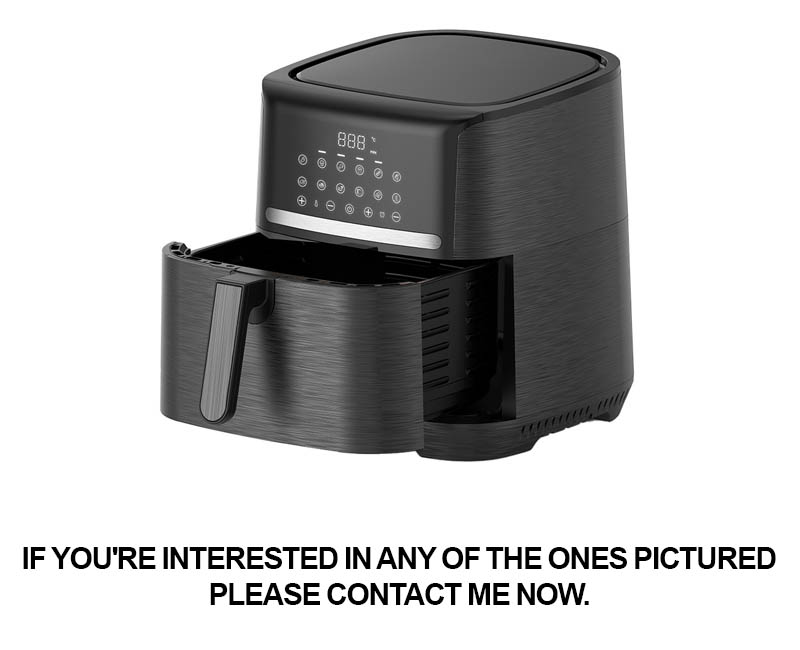
In the ever-evolving landscape of commercial kitchen appliances, the air fryer has emerged as a game-changer. As we look ahead, the future of commercial air fryer development is poised to bring about significant advancements, reshaping the way we cook and consume food. Innovations in technology, efficiency, and user experience are set to redefine the air fryer industry, offering a glimpse into what’s next.
The integration of smart technology is a key trend that promises to transform the commercial air fryer. Imagine a fryer that not only cooks with precision but also communicates with the kitchen staff. Smart air fryers are being developed with IoT capabilities, allowing for remote monitoring and control, as well as predictive maintenance. This means that the fryer can anticipate and prevent issues before they arise, ensuring uninterrupted service and reducing downtime.
Energy efficiency is another crucial aspect of future development. As awareness of environmental sustainability grows, manufacturers are focusing on creating air fryers that consume less energy. This not only reduces operational costs for businesses but also aligns with global efforts to combat climate change. Advanced heat exchange systems and optimized cooking cycles are being researched to minimize energy use without compromising on performance.
The user experience is also set to improve dramatically. New interfaces, such as touchscreens and voice control, are being integrated into commercial air fryers to make them more intuitive and user-friendly. These advancements will allow chefs and kitchen staff to operate the fryers with greater ease, reducing the learning curve and increasing productivity. Additionally, customizable settings and profiles will cater to a variety of recipes and dietary preferences, offering flexibility in kitchen applications.
Safety features are becoming a cornerstone of future air fryer development. As commercial kitchens handle large volumes of food, the risk of accidents and fires is always present. Modern air fryers are being designed with safety in mind, featuring anti-overheating protection, automatic shut-off functions, and child locks. These features not only protect kitchen staff and patrons but also safeguard the investment in the appliance itself.
The customization of air fryers is also on the rise. Factories are producing models that can be tailored to specific business needs, whether it’s a matter of size, capacity, or specialized cooking functions. For instance, some restaurants might require a fryer capable of handling large batches of food, while others might need a model that can cook a variety of items simultaneously. This customization ensures that each air fryer is optimized for its intended use.
Another interesting development is the inclusion of modular components. This allows for easy upgrades and repairs, ensuring that the fryer remains a reliable and efficient piece of equipment throughout its lifespan. By designing fryers with interchangeable parts, manufacturers are creating a more sustainable and cost-effective solution for commercial kitchens.
The integration of new cooking techniques is also a part of the future. For instance, some air fryers are being developed with convection capabilities, combining the benefits of air frying with the even cooking of convection ovens. This could open up new possibilities for chefs looking to create a diverse range of dishes with a single appliance.
Lastly, the rise of personalized nutrition and clean eating has influenced the direction of air fryer development. As consumers become more health-conscious, there is a growing demand for appliances that can prepare food in a way that is both delicious and nutritious. This means that future air fryers will likely offer a variety of cooking modes that cater to different health needs, such as low-fat, low-carb, or gluten-free options.
In conclusion, the future of commercial air fryer development is marked by a commitment to innovation, efficiency, and user satisfaction. With advancements in technology, safety, and customization, these appliances are poised to become an indispensable part of the modern commercial kitchen. As we look to the future, the possibilities are as limitless as the creativity of the chefs who will be using them.
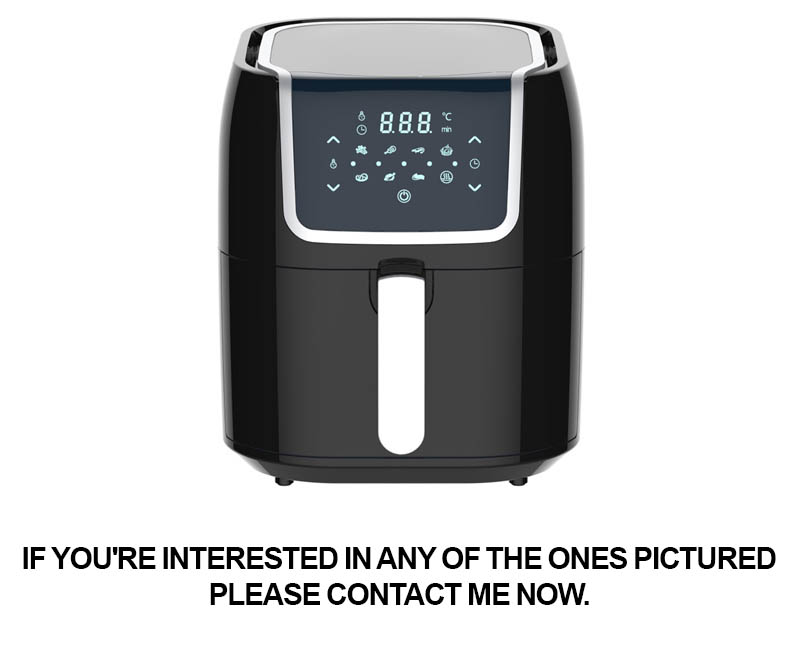
The commercial air fryer’s rise in popularity has been nothing short of remarkable. It’s not just a kitchen gadget; it’s a symbol of a culinary revolution that’s reshaping how we perceive and enjoy our meals. From its humble beginnings to its current status as a staple in commercial kitchens worldwide, the air fryer has become a game-changer in the food industry. Here’s why.
Efficiency and Versatility RedefinedThe air fryer’s technology uses hot air to circulate around food, mimicking the frying process without the need for gallons of oil. This efficiency not only reduces cooking times but also slashes the fat content of fried foods. The versatility of these appliances is another game-changer, allowing chefs and home cooks alike to prepare a wide array of dishes, from crispy French fries to tender chicken wings.
Health and Wellness RevolutionHealth-conscious consumers are constantly seeking ways to enjoy their favorite fried foods without the guilt. The air fryer’s ability to cook with minimal oil has made it a darling in the health and wellness community. It’s not just about reducing calories; it’s about promoting healthier lifestyles. The device has become a beacon of hope for those looking to maintain a balanced diet without sacrificing flavor.
Environmental BenefitsSustainability is more than just a buzzword; it’s a critical concern for businesses and consumers alike. The commercial air fryer’s reduced oil usage has environmental implications that extend beyond the kitchen. Less oil means fewer fryer oil changes, which in turn means less waste and a smaller carbon footprint. The technology is a step towards a more eco-friendly food service industry.
Innovation in DesignAs the demand for air fryers has surged, so too has the innovation in their design. Modern commercial air fryers come with features like programmable timers, adjustable temperature settings, and even smart technology that allows for remote monitoring. These advancements have turned the air fryer from a simple kitchen appliance into a sophisticated piece of equipment that can handle a variety of tasks with precision.
Culinary ExplorationChefs have embraced the air fryer as a tool for culinary exploration. The ability to create crispy, golden-textured dishes with less oil has opened up new possibilities in the kitchen. Air frying has become a favorite method for preparing seafood, poultry, and even desserts. The technique has allowed for the development of new recipes and menu items that are both indulgent and healthful.
Cost-Effective CookingFrom a business perspective, the cost-effectiveness of air frying is undeniable. The reduced oil consumption means lower operational costs. Additionally, the energy-efficient nature of air fryers can lead to significant savings on electricity bills. For restaurants and food service operations, this is a compelling reason to invest in air fryers.
Market Penetration and GrowthThe air fryer market has seen exponential growth over the years. This surge is not just confined to consumer markets but has also made significant inroads into commercial kitchens. The ease of use, health benefits, and cost savings have made air fryers an attractive option for businesses looking to offer healthier menu items while keeping costs in check.
Education and Consumer AwarenessThe rise of the air fryer has also been accompanied by a surge in consumer education. More people are becoming aware of the health risks associated with traditional frying methods and are actively seeking out healthier alternatives. The air fryer’s popularity has sparked a wave of awareness about the benefits of air frying, further driving its adoption.
Global Reach and DiversityThe air fryer has transcended geographical boundaries, becoming a global phenomenon. From bustling city streets to remote villages, the air fryer has found its way into countless kitchens around the world. This global reach has also brought a diversity of culinary traditions into the air fryer’s fold, leading to a rich tapestry of recipes and dishes.
The Future is Air-FriedAs we look to the future, the commercial air fryer stands as a testament to the ingenuity of human innovation. With ongoing technological advancements and a growing demand for health-conscious and sustainable cooking solutions, the air fryer is poised to become an even more integral part of the food industry. It’s not just a game-changer; it’s the future of cooking.